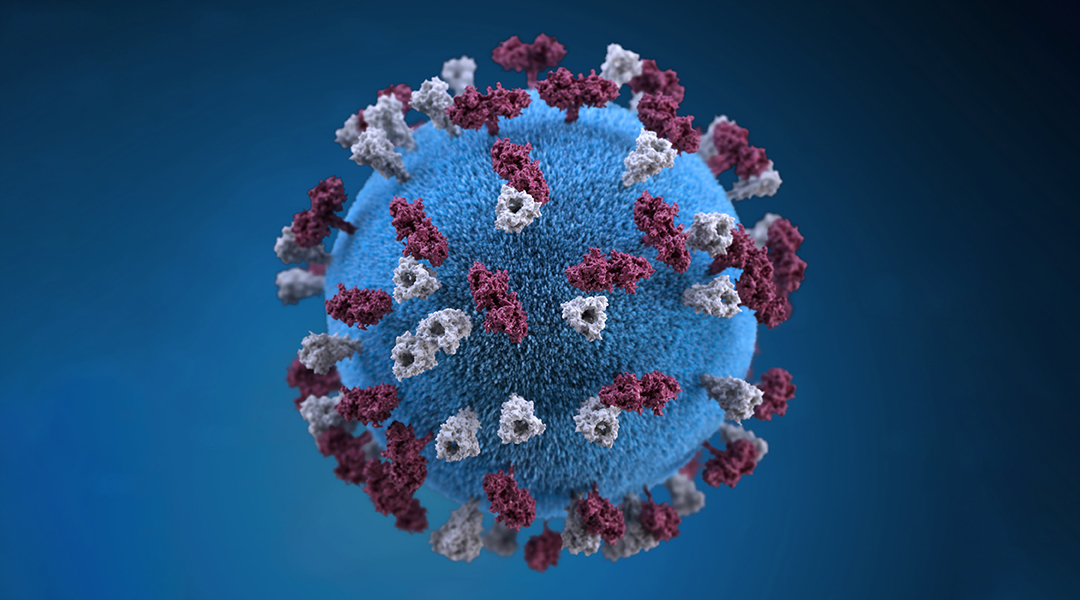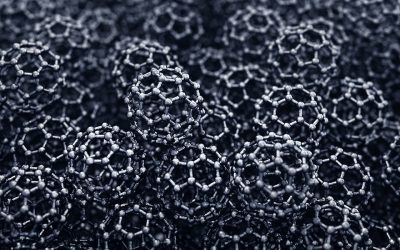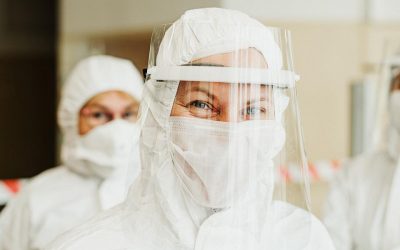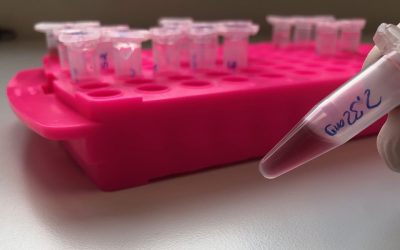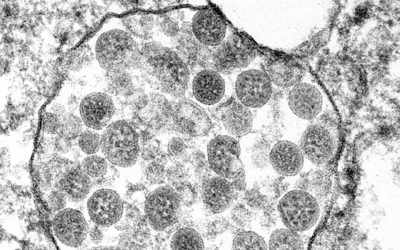Image credit: CDC
At the heart and soul of the SARS-CoV-2 virus is a large RNA molecule waiting to wreak havoc inside a human cell. The vast majority of current research into coronaviruses focuses on the effect of the proteins encoded by this viral RNA molecule on cellular processes and receptor binding – but what about the viral RNA itself?
Interestingly, certain human diseases are thought to be due to “toxic” RNA molecules acting on their own rather than through any protein product encoded by the RNA. Myotonic dystrophy, for example, is a genetic disorder that causes progressive muscle weakening and other systemic problems. Many of these problems in this genetic disease result from the accumulation of an aberrant RNA molecule in the affected cells. Thus, the accumulation of some RNA molecules in cells can clearly cause major problems.
Taking a closer look at the direct impact of the RNAs made by SARS-CoV-2 in the infected cell is therefore fully warranted since viral RNAs are clearly aberrant and very abundant in the cell. A recent study published in WIREs RNA takes a deep look at the direct implications of the presence of these abundant coronavirus RNAs in the infected cell, and the implications of the available data are clear: RNA-related processes that are key to the biology of the cell and are at definite risk of significant disruption during coronavirus infections.
RNA splicing is a process that pieces together different parts or exons of a gene to generate functional messenger RNAs that encode proteins. The process of alternative splicing — rearrangements in the normal pattern of exon joining — generates great diversity in the proteins made in the cell. In fact, transcription (the synthesis of mRNAs) and RNA splicing are two of the major players in regulation of gene expression in human cells.
Given its huge potential impact on gene expression, alternative splicing is very highly regulated in the cell. During a coronavirus infection, the regulation of alternative splicing may be significantly affected since two known major regulators of alternative splicing, PTB and hnRNP A1, bind to abundant coronavirus RNAs. Therefore, these regulatory proteins are likely sequestered by the viral RNAs and can’t carry out their normal function.
A cell that can transcribe but can’t regulate the splicing of its mRNAs loses a good deal of control over its gene expression — it’s like the infected cell is trying to respond to and fight off a viral infection with one hand tied behind its back. Interestingly, the sequestration of splicing factors by aberrant RNA is also thought to be a key foundation for how toxic RNAs in myotonic dystrophy cause disease.
RNA decay, a process that is the other major player in the regulation of cellular gene expression, is also significantly affected in coronavirus infections. Coronaviruses express a nuclease — a protein that cuts RNAs and targets them for degradation — during infections that dramatically destabilizes cellular mRNAs. Curiously, coronaviral RNAs are surprisingly resilient to this nuclease and are stable during the infection. This impressive RNA stability is due to a property associated with a common sequence found at the start of all of their RNAs that is inserted there by some interesting gymnastics of the viral polymerase during transcription. How that “leader” sequence functions to maintain coronaviral RNA stability remains to be elucidated.
In addition to sequence elements that make coronavirus RNAs resilient to degradation, coronaviral mRNAs contain other interesting common properties. These include the modification of the ends of the viral RNA to serve two key functions. First, methylations at the start (or 5’ end) of the viral RNAs trick the cell to think that the transcript was just like a normal cellular RNA. Through this mechanism, coronaviral RNAs avoid recognition by the cell as “non-self” molecules that can rapidly cause a shutdown of cellular processes through the induction of interferon. Second, changes in the length of the poly(A) tail at the other end of coronaviral mRNAs as the infection progresses can serve to fine tune the kinetics of viral gene expression. More efficient viral gene expression contributes to more viral replication, and likely contributes to more disease pathogenesis.
The network of regulatory RNAs in the cell— including micro RNAs (miRNAs), long-noncoding RNAs, and circular RNAs — is also altered during coronavirus infection. There are also RNA binding proteins in addition to the splicing factors noted above that are found to be associated with the abundant coronavirus RNAs now found in the cell. This suggests that the viral RNAs may be holding onto these proteins as well and preventing them from performing their usual functions. The bottom line is clearly that coronavirus RNAs and its gene products actively interface and interfere with many aspects of the RNA biology of the infected cell.
While these RNA-centric alterations taking place during coronavirus infections might seem on the surface like molecular details that belong in advanced textbooks, they may also represent novel avenues for therapeutic intervention that reduce viral replication or moderate symptoms associated with pathogenesis.
Importantly, the interface between viral RNAs and aspects of the RNA biology of the cell appear to be largely shared among all types of coronaviruses. Thus, drugs that target the conserved RNA interface of the coronavirus infection may very well prove to be broad-spectrum in nature, providing a possible arsenal to treat not only current coronavirus infections but perhaps novel emerging coronaviruses as well. While targeting drugs to viral polymerases, proteases and receptors has taken center stage to date, the only reason this promising RNA-centric avenue for treatment has not been pursued is that we simply do not know enough of the details of the RNA biology of coronaviruses.
Now is clearly the time if there ever was one to leave no stone unturned in our efforts to develop antiviral approaches to treat and prevent coronavirus infections – and novel avenues of intervention may lie in the RNA biology of the viral RNA infection.
Reference: Maranon, et al. ‘The Interface between Coronaviruses and Host Cell RNA Biology: Novel Potential Insights for Future Therapeutic Intervention.’ WIREs RNA (2020) DOI: 10.1002/wrna.1614

